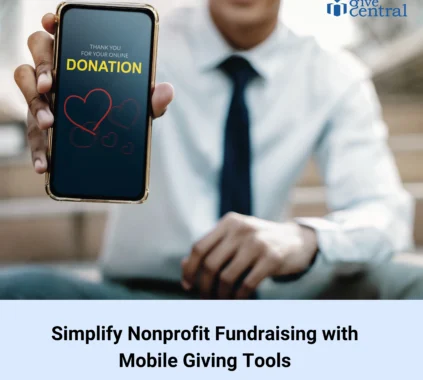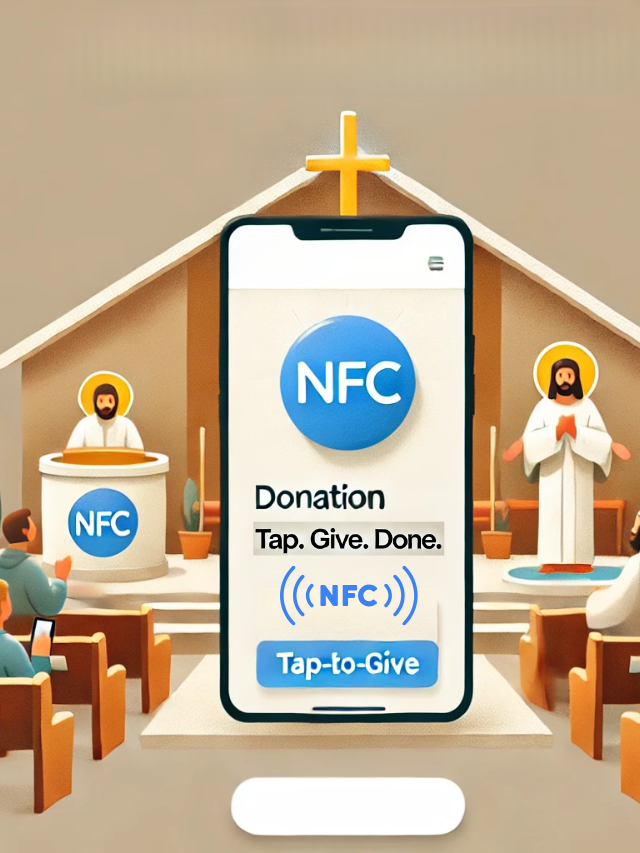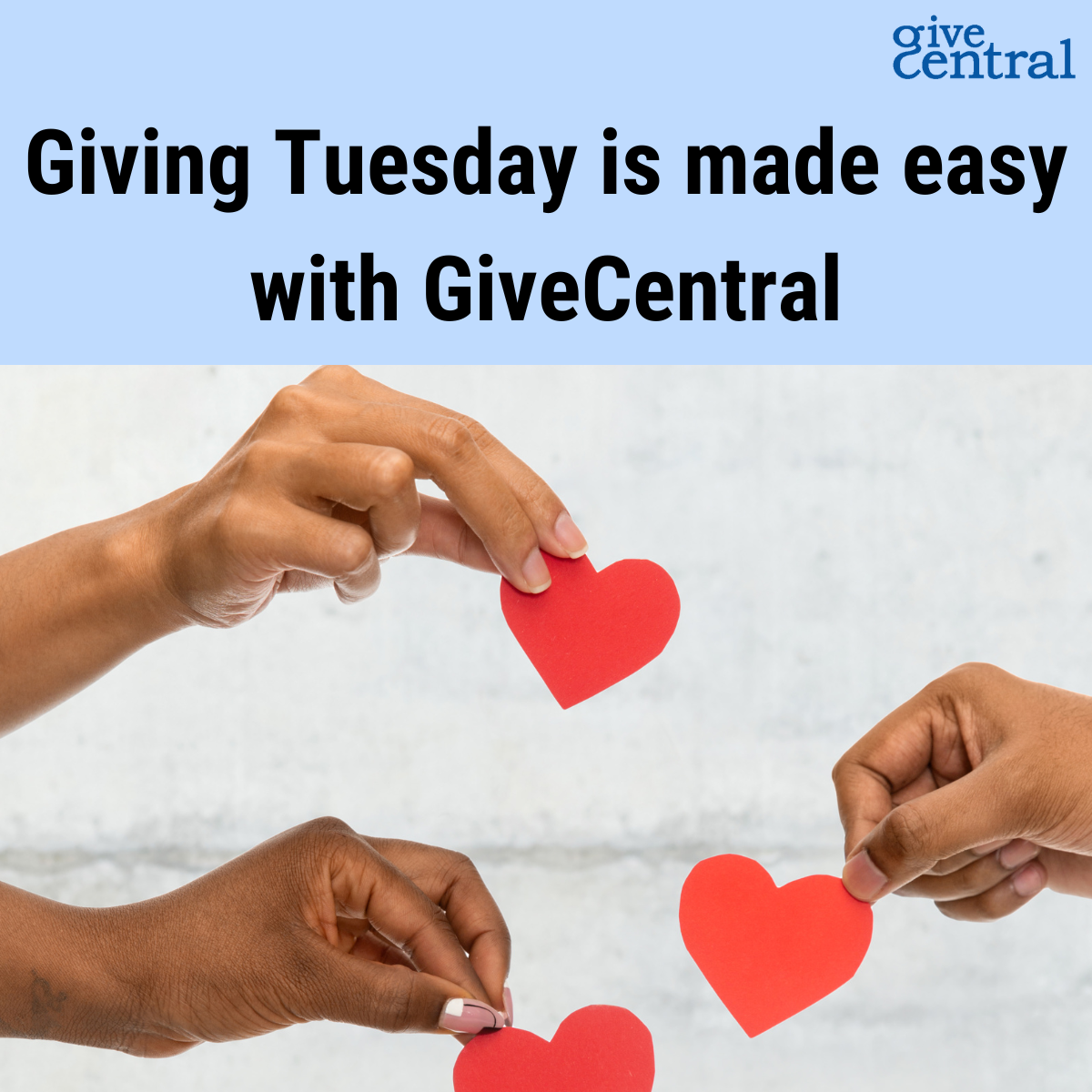For nonprofit organizations, there are different fundraising campaigns that drive donations all year round. In the process of fundraising for nonprofits, receipts need to be given for every donation made.
What exactly is a Donation Receipt?
In simple terms, a donation receipt is a written acknowledgement that a donation has been made. Donation receipts are proof of an in-kind or a monetary contribution to an organization.
These can be in the form of a letter, email or even a card; the receipt has to state the name of the donor and the organization, the date and the amount that has been donated. Many nonprofits send out donation receipts by the end of the year or the first month of the following year. However, it is advisable to send out receipts as soon as possible due to the fact that donors are more likely to give again when their gifts are acknowledged within 48 hours of the donation.
Why are donation receipts important?
Donation receipts play an important role for both donors and nonprofit organizations. Fundraising for nonprofits includes documentation and receipts are an important part of the same. As for the organization, failure to send receipts can result in a penalty of $10 per donation. It also helps a nonprofit to track donor records and maintain an accurate financial record. The availability and deliverance of donation receipts are also a part of an excellent donor stewardship.
When it comes to donors, donor receipts are needed as documentation for tax deduction related to charitable giving. Donors are required to provide the IRS with a proof that donation has been made. The receipts also act as a confirmation of donation and help donors to keep a precise financial record.
When are donation receipts necessary?
It is a general rule that donors cannot make a claim for tax deduction without a proof of donation. For gifts that are below $250, receipts can be given in the form of a thank you note or an email. On the other hand, an official receipt has to be given for gifts that are above $250. It is most ideal to give all receipts in the form of an official one. An automated email with details of the donation as soon as the donor donates is a perfect example.
Exceptions
There are mainly two exceptions where nonprofits do not have to provide receipts. The first one is known as a “token exception” that applies when nonprofits, in exchange for a donation, provide donors with insubstantial goods or services. The second one is a “membership exception” that states that nonprofits do not necessarily have to provide a receipt for insubstantial goods and services that are given in return for contributions made by donors with annual memberships. In case a receipt has to be given at all for any of the two cases, the receipt must include a description of the goods and services and an estimate of the value of the same.
Different scenarios
In case of direct deduction from paycheck, donors can use different documents as a donation receipt. For instance, Wage & Tax Statement, W-2 or other employer document delineating the withheld amount can be used as a receipt. A pledge card is a good option as well.
When it comes to unreimbursed expenses, a donation receipt must be secured for any donation amount. This is for any amount that is greater than $250 in the form of unreimbursed expenses that refers to the transportation costs paid for the donated services.
Conclusion
Donation receipts can be confusing at times, but receipts are an important aspect when it comes to fundraising for nonprofits. When you have multiple fundraising campaigns that are running successfully, management and record keeping have to be perfected as well. It is also extremely important to familiarize yourself with the rules laid out by the IRS. All the very best for your fundraising and receipt issuing!
Downloading your tax letter from your GiveCentral account
GiveCentral users can download their donation receipts/ tax letters from their profile by following these simple steps.
charitable giving Donation Receipts donor stewardship Donors nonprofit fundraising tax deductible donations
Last modified: December 30, 2020





















Профессиональные seo https://seo-optimizaciya-kazan.ru услуги для максимизации онлайн-видимости вашего бизнеса. Наши эксперты проведут глубокий анализ сайта, оптимизируют контент и структуру, улучшат технические аспекты и разработают индивидуальные стратегии продвижения.
Top sports news https://idman-azerbaycan.com.az photos and blogs from experts and famous athletes, as well as statistics and information about matches of leading championships.
Latest news and analytics of the Premier League https://premier-league.com.az. Detailed descriptions of matches, team statistics and the most interesting football events. EPL Azerbaijan is the best place for football fans.
The latest analysis, tournament reviews and the most interesting features of the Spider-Man game https://spider-man.com.az series in Azerbaijani.
Sergio Ramos Garcia https://sergio-ramos.com.az Spanish footballer, defender. Former Spanish national team player. He played for 16 seasons as a central defender for Real Madrid, where he captained for six seasons.
Mohamed Salah Hamed Mehrez Ghali https://mohamed-salah.liverpool-fr.com Footballeur egyptien, attaquant du club anglais de Liverpool et l’equipe nationale egyptienne. Considere comme l’un des meilleurs joueurs du monde.
Kylian Mbappe https://kylian-mbappe.psg-fr.com Footballeur, attaquant francais. Il joue pour le PSG et l’equipe de France. Ne le 20 decembre 1998 a Paris. Mbappe est francais de nationalite. La taille de l’athlete est de 178 cm.
Conor Anthony McGregor https://conor-mcgregor.com.az Irish mixed martial arts fighter who also performed in professional boxing. He performs under the auspices of the UFC in the lightweight weight category. Former UFC lightweight and featherweight champion.
Оперативный вывод из запоя https://www.liveinternet.ru/users/laralim/post505923855/ на дому. Срочный выезд частного опытного нарколога круглосуточно. При необходимости больного госпитализируют в стационар.
Совсем недавно открылся новый интернет портал BlackSprut (Блекспрут) https://bs2cite.cc в даркнете, который предлагает купить нелегальные товары и заказать запрещенные услуги. Самая крупнейшая площадка СНГ. Любимые шопы и отзывчивая поддержка.
News, tournaments, guides and strategies about the latest GTA games https://gta-ar.com. Stay tuned for the best GTA gaming experience
Открытие для себя Ерлинг Хааланда https://manchestercity.erling-haaland-cz.com, a talented player of «Manchester City». Learn more about his skills, achievements and career growth.
French prodigy Kylian Mbappe https://realmadrid.kylian-mbappe-cz.com is taking football by storm, joining his main target, ” Real.” New titles and records are expected.
Harry Kane’s journey https://bavaria.harry-kane-cz.com from Tottenham’s leading striker to Bayern’s leader and Champions League champion – this is the story of a triumphant ascent to the football Olympus.
Mohamed Salah https://liverpool.mohamed-salah-cz.com, who grew up in a small town in Egypt, conquered Europe and became Liverpool star and one of the best players in the world.
Son Heung-min’s https://tottenhamhotspur.son-heung-min-cz.com success story at Tottenham Hotspur and his influence on the South Korean football, youth inspiration and changing the perception of Asian players.
A study of the influence of Rodrigo https://realmadrid.rodrygo-cz.com on the success and marketing strategy of Real Madrid: analysis of technical skills, popularity in Media and commercial success.
Find out about Alisson https://liverpool.alisson-becker-cz.com‘s influence on Liverpool’s success, from his defense to personal achievements that made him one of the best goalkeepers in the world.
Romelu Lukaku https://chelsea.romelu-lukaku-cz.com, one of the best strikers in Europe, returns to Chelsea to continue climbing to the top of the football Olympus.
An indomitable spirit, incredible skills and five championships – how Kobe Bryant https://losangeles-lakers.kobe-bryant.cz became an icon of the Los Angeles Lakers and the entire NBA world.
I’ve been using CBD gummies in search or [url=https://www.cornbreadhemp.com/products/full-spectrum-cbd-capsules ]cbd oil capsules for sale[/url] a year now, and I can’t have the courage of one’s convictions pretend how much they’ve improved my spark of life! The flavors are at rest engaging, making it a amusing share of my habitually routine. My apprehension and distress levels enjoy significantly decreased, and my beauty sleep blue blood has improved tremendously. I wake up feeling more refreshed and energetic. Be that as it may, I’ve noticed a tittle of drowsiness during the lifetime, and I fancy the effects lasted a tittle longer. In spite of these unimportant issues, I highly recommend these CBD gummies in the service of anyone looking to enrich their well-being instinctively!
Young Briton Lando Norris https://mclaren.lando-norris.cz is at the heart of McLaren’s Formula 1 renaissance, regularly achieving podium finishes and winning.
The legendary Spanish racer Fernando Alonso https://formula-1.fernando-alonso.cz returns to Formula 1 after several years.
Discover exciting virtual football https://fortnite-ar.com in Fortnite. Your central hub for the latest news, expert strategy and exciting eSports reporting.
Discover the wonderful world of online games https://onlayn-oyinlar.com with GameHub. Get the latest news, reviews and tips for your favorite games. Join our gaming community today!
Latest GTA game news https://gta-uzbek.com, tournaments, guides and strategies. Stay tuned for the best GTA gaming experience
Legendary striker Cristiano Ronaldo https://an-nasr.cristiano-ronaldo-fr.com signed a contract with the Saudi club ” An-Nasr”, opening a new chapter in his illustrious career in the Middle East.
I’ve been using CBD gummies in return or https://www.cornbreadhemp.com/pages/what-do-cbd-gummies-do-for-men a year now, and I can’t believe how much they’ve improved my life! The flavors are hush delicious, making it a amusing share of my day after day routine. My uneasiness and distress levels enjoy significantly decreased, and my log a few zees z’s distinction has improved tremendously. I wake up feeling more refreshed and energetic. Even so, I’ve noticed a bit of drowsiness during the lifetime, and I care the effects lasted a bit longer. In the face these trivial issues, I much recommend these CBD gummies for anyone looking to enhance their well-being normally!
Website dedicated to football player Paul Pogba https://pogba-uz.com. Latest news from the world of football.
Latest news and information about Marcelo https://marselo-uz.com on this site! Find Marcelo’s biography, career, game stats and more.
Find the latest information on Conor McGregor https://conor-mcgregor.uz news, fights, and interviews. Check out detailed articles and news about McGregor’s UFC career, wins, training, and personal life.
If you are a fan of UFC https://ufc-hoje.com the most famous organization in the world, come visit us. The most important news and highlights from the UFC world await you on our website.
Site with the latest news, statistics, photos of Pele https://edson-arantes-do-nascimento.com and much more. Get the latest news and information about football legend Pele.
Welcome to our official website, where you will find everything about the career of Gianluigi Buffon https://gianluigi-buffon.org. Discover the story of this legendary goalkeeper who made football history.
Pedri’s story https://barcelona.pedri-fr.com from his youth in the Canary Islands to becoming a world-class star in Barcelona, ??with international success and recognition.
Discover Pierre Gasly’s https://alpine.pierre-gasly.com journey through the world of Formula 1, from his beginnings with Toro Rosso to his extraordinary achievements with Alpine.
Victor Wembanyama’s travel postcard https://san-antonio-spurs.victor-wembanyama.biz from his career in France to his impact in the NBA with the San Antonio Spurs.
Golden State Warriors success story https://golden-state-warriors.stephen-curry-fr.com Stephen Curry: From becoming a leader to creating a basketball dynasty that redefined the game.
The story of Joe Biden’s https://president-of-the-usa.joe-biden-fr.com triumphant journey, overcoming many obstacles on his path to the White House and becoming the 46th President of the United States.
Olympique de Marseille https://liga1.marseilles-fr.com after several years in the shadows, once again becomes champion of France. How did they do it and what prospects open up for the club
The fascinating story of the creation and meteoric rise of Amazon https://amazon.jeff-bezos-fr.com from its humble beginnings as an online bookstore to its dominant force in the world of e-commerce.
The inspiring story of Travis Scott’s https://yeezus.travis-scott-fr.com rise from emerging artist to one of modern hip-hop’s brightest stars through his collaboration with Kanye West.
How Taylor Swift https://midnights.taylor-swift-fr.com reinvented her sound and image on the intimate and reflective album “Midnights,” revealing new dimensions of her talent.
Explore the rich history and unrivaled atmosphere of the iconic Old Trafford Stadium https://old-trafford.manchester-united-fr.com, home of one of the world’s most decorated football clubs, Manchester United.
Единственная в России студия кастомных париков https://wigdealers.ru, где мастера индивидуально подбирают структуру волос и основу по форме головы, после чего стригут, окрашивают, делают укладку и доводят до идеала ваш будущий аксессуар.
The iconic Anfield https://enfield.liverpool-fr.com stadium and the passionate Liverpool fans are an integral part of English football culture.
Inter Miami FC https://mls.inter-miami-fr.com has become a major player in MLS thanks to its star roster, economic growth and international influence.
Rio Bet https://bookparts.ru
официальный сайт Rio Bet Casino сайт казино рио бет
Хотите научиться готовить самые изысканные и сложные торты? В этом https://v1.skladchik.org/tags/tort/ разделе вы найдете множество подробных пошаговых рецептов самых трендовых и известных тортов с возможностью получить их за сущие копейки благодаря складчине. Готовьте с удовольствием и открывайте для себя новые рецепты вместе с Skladchik.org
Пансионаты для пожилых людей https://moyomesto.ru в Самаре по доступным ценам. Специальные условия по уходу, индивидуальные программы.
The fascinating story of Sergio Ramos’ https://seville.sergioramos.net rise from Sevilla graduate to one of Real Madrid and Spain’s greatest defenders.
Ousmane Dembele’s https://paris-saint-germain.ousmanedembele-br.com rise from promising talent to key player for French football giants Paris Saint-Germain. An exciting success story.
The incredible story https://napoli.khvichakvaratskhelia-br.com of a young Georgian talent’s transformation into an Italian Serie A star. Khvicha Kvaraeshvili is a rising phenomenon in European football.
O meio-campista Rafael Veiga leva https://palmeiras.raphaelveiga-br.com o Palmeiras ao sucesso – o campeonato brasileiro e a vitoria na Copa Libertadores aos 24 anos.